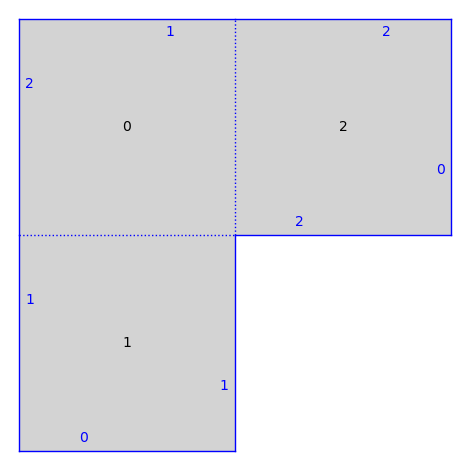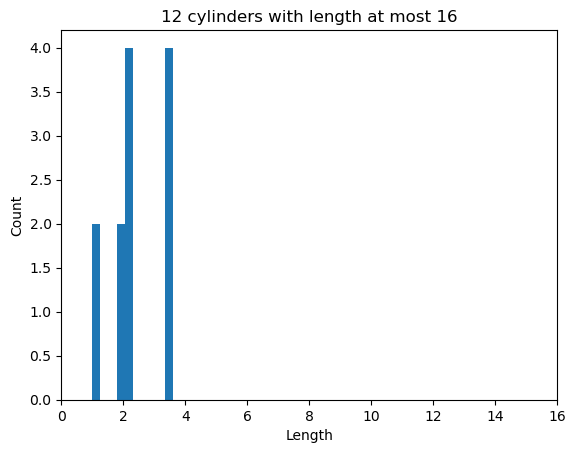Siegel-Veech Constants¶
We count the number of cylinders of circumference at most \(L\) in a surface as a step in a potential computation of Siegel-Veech constants that David Aulicino was interested in.
Note that parts of this code use the C++ library libflatsurf. Please consult our installation instructions if this library is not available on your system yet.
We start by creating a surface with sage-flatsurf.
from flatsurf import translation_surfaces
S = translation_surfaces.mcmullen_L(1, 1, 1, 1)
S.plot()

Decomposition of a surface into cylinders is implemented in pyflatsurf. We triangulate our surface and make sure that its vertices are singularities.
S = S.pyflatsurf().codomain().flat_triangulation()
S = S.eliminateMarkedPoints().surface()
We will iterate over all directions coming from saddle connections of length at most L (ignoring connections that have the same slope.)
L = int(16)
directions = S.connections().bound(L).slopes()
For each direction we want to compute a decomposition into cylinders and minimal components. Note that sometimes our algorithm cannot decide whether a component is minimal. However, this is not an issue here: we can stop the decomposition process when a component has become so stretched out that it has no hope of producing a cylinder of circumference \(≤L\) anymore.
Here we define the target of the decomposition, i.e., a predicate that determines when a decomposition of a component can be stopped:
def target(component):
if component.cylinder():
# This component is a cylinder. No further decomposition needed.
return True
if component.withoutPeriodicTrajectory():
# This component is minimal. Further decomposition will not produce any cylinders.
return True
height = component.height()
# This height bounds the size of any cylinder. However, it is stretched by the length of the vector
# defining the vertical direction. (That vector is not normalized because that is hard to do in
# general rings…)
from pyflatsurf import flatsurf
bound = (height * height) / flatsurf.Bound.upper(
component.vertical().vertical()
).squared()
return bound > L
Now we perform the actual decomposition and collect the cylinders of circumference \(≤L\):
circumferences = []
for direction in directions:
from pyflatsurf import flatsurf
decomposition = flatsurf.makeFlowDecomposition(S, direction.vector())
decomposition.decompose(target)
for component in decomposition.components():
if component.cylinder():
circumference = component.circumferenceHolonomy()
if circumference > L:
continue
circumferences.append(circumference)
We will plot a histogram of all the cylinders that we found ordered by their length. It would be easy to plot this differently, weighted by the area, …
lengths = [sqrt(float(v.x()) ** 2 + float(v.y()) ** 2) for v in circumferences]
import matplotlib.pyplot as plot
_ = plot.hist(lengths)
_ = plot.xlim(0, L)
_ = plot.title(f"{len(circumferences)} cylinders with length at most {L}")
_ = plot.xlabel("Length")
_ = plot.ylabel("Count")
